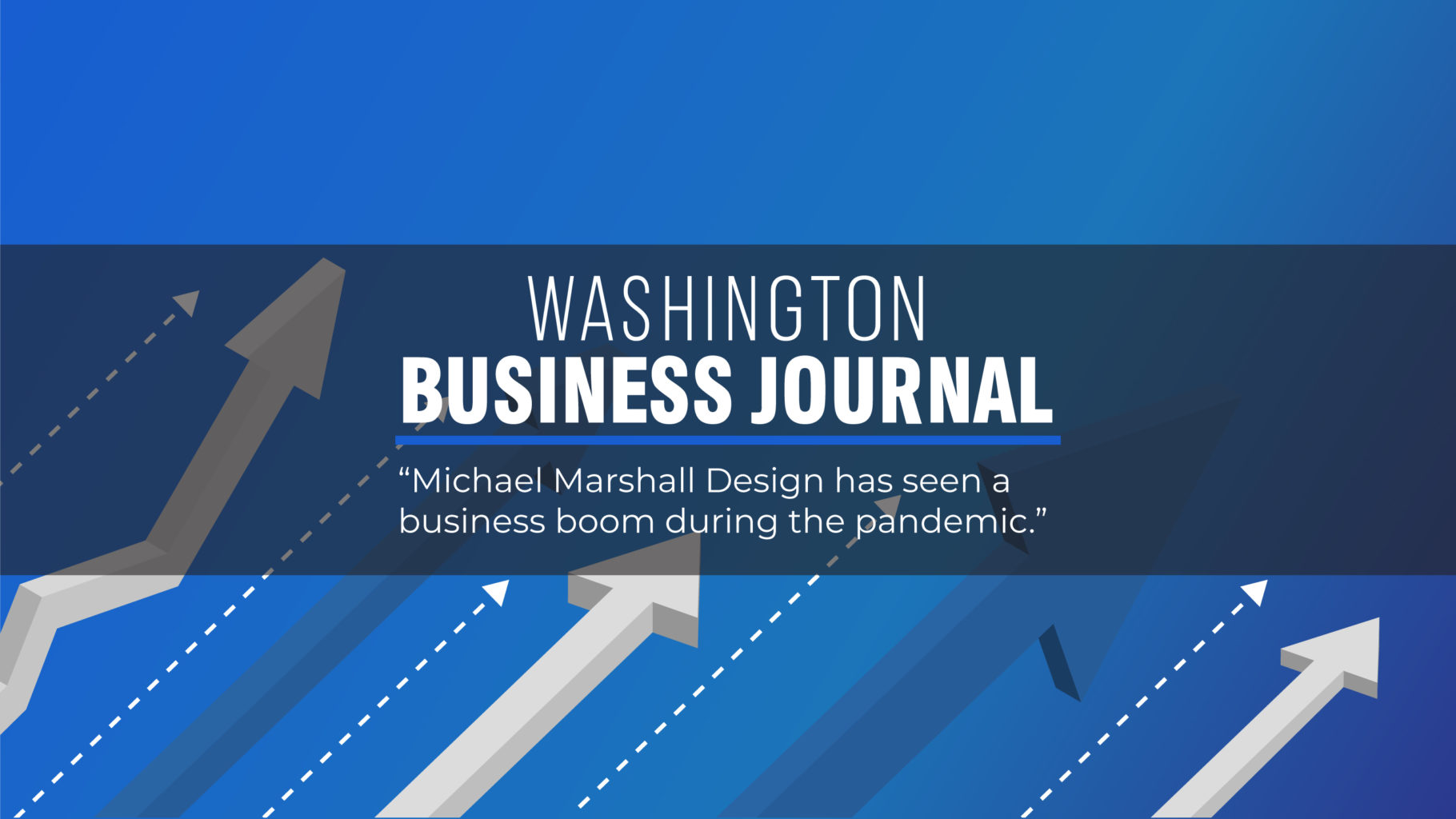
MMD Featured in WBJ Small Business Spotlight
Michael Marshall Design was recently featured in the Washington Business Journal as part of its series spotlighting small businesses. The article is reprinted here in its entirety:
Architect Michael Marshall has a knack for landing big D.C. projects. There could be a lot more on the horizon.
About the business: Michael Marshall Design is one of D.C.’s most prominent local architecture, design and branding firms, known for its involvement in District-backed projects such as the Entertainment and Sports Arena and Audi Field.
How it started: Marshall is a D.C. native, attending two local universities as he pursued a career in architecture: the University of the District of Columbia, then the Catholic University of America. He eventually landed a spot at Yale University to pursue a master’s degree and then quickly picked up a chance to study architecture overseas.
But Marshall knew he wanted to return home to start his career, founding his own firm in D.C. in 1989. He started off working on “high-end residential” projects, but slowly made the transition into commercial and mixed-use.
Eventually, Marshall teamed up with Forest City Washington as the developer vied for the chance to transform D.C.’s old convention center site. Then-Mayor Tony Williams ended up picking Hines to build what would become CityCenterDC, but Marshall credits the experience with helping his firm learn how to compete for government projects.
Over the last few decades, they’ve taken on many other similar opportunities, starting with D.C. school modernizations and eventually ramping up to major economic development priorities for the city. The firm also worked on the redevelopment of the old wax museum property in Mount Vernon Triangle, now known as City Vista, as well as the Howard Theatre revitalization and UDC’s new student center.
“It became evident that we didn’t have a particular niche, but we had a knack for projects that were important to D.C. and could become a catalyst for the neighborhood’s broader redevelopment,” Marshall said.
Marshall later partnered with architect Paola Moya to form a joint firm in 2010, but she struck out on her own in 2017.
Pandemic effect: Marshall says he took Covid seriously right away, having lost a cousin to the disease. He moved his 15 employees into remote work early.
Unlike other businesses, Marshall said his biggest challenge has been keeping up with demand. As Covid and last summer’s racial justice protests forced reckonings within the development industry, Marshall said many companies showed a new interest in working with a Black-owned firm like his.
“People have been awakened to the need for equity in architecture, engineering and development,” he said. “It’s too bad it took the death of George Floyd to bring us to that understanding.”
Pandemic pivot: Most of Marshall’s work comes via Google videoconferences these days, which allows him to sketch changes to designs in real time. Some meetings on job sites have resumed, but he said many still involve a virtual component, with some staff still remote.
The challenge: With business booming, Marshall most misses the ability to consult his co-workers without “making an appointment.”
“I really miss the easy shorthand, the ability to just walk over and ask, ‘What do you think of this?’” he said.
What’s next: Marshall’s firm is waiting for word on several big proposals, perhaps none bigger than a pitch to help redevelop D.C.’s Reeves Center with MRP Realty and CSG Urban Partners.
But he also has his eyes on expansion. Marshall said he considered opening offices in Chicago and New York pre-pandemic and wants to revisit the idea as the Delta wave subsides.
“Because of the opportunities we’ve had as a small and minority-owned business, that could allow us to be competitive in those markets and collaborate with other minority architects in those cities to really have a go at it for certain projects,” he said.